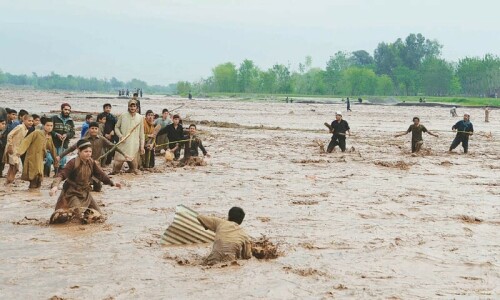SCIENTISTS have calculated when life on Earth must come to an end.
In a report that manufacturers of diaries may wish to note, researchers worked out when the sun will grow so warm that the oceans evaporate and the planet ceases to be habitable.
As an inconvenient consequence of our sun’s natural life cycle and the orbit of the Earth, the planet will warm so much it becomes impossible for plants, animals and humans to survive.
“It will get progressively hotter and there’s nothing we can do about it,” said Andrew Rushby, who studies planet habitability at the University of East Anglia.The scientists’ work centres on the concept of habitable zones—the “Goldilocks regions” of space around stars where the surface of a planet is neither too hot nor too cold for liquid water to flow. Among crucial factors is the brightness—or temperature—of the star it circles.
Unlike climate change driven by greenhouse gases, the culprit behind the looming disaster is found in the equations of stellar evolution, which describe how stars burn brighter as they age. As they burn through what is called their main sequence, when they are fusing hydrogen into helium, they emit ever more heat.
This pushes the habitable zone outwards in space so regions nearby become too hot for life, while more distant frigid stretches get warmer and more inviting.
Writing in the journal Astrobiology, the scientists explain how they found that the habitable zone around the sun was creeping outwards at about a tenth of an astronomical unit (the distance from the Earth to the sun) every billion years.
The Earth has some time left before the sun gets too hot. The scientists calculate that the planet will fall out of the habitable zone some time in the next 1.75bn to 3.25bn years. The habitable zone will start beyond Earth’s orbit, and make Mars, the fourth rock from the sun, more balmy.
“If we are still around, and the optimist in me likes to think we would be, I hope we’d be away from the Earth, perhaps on Mars, or spread out in a huge galactic family across the Milky Way,” said Rushby. He conceded that humans might have evolved into a different form by then.
Astronomers have spotted more than 1,000 potential planets around stars beyond the solar system. With the same model, the scientists worked out which might be the most likely to support life.
Planets close to smaller stars called red dwarfs spent much longer in their habitable zones since they burn through their main sequence much more slowly.
If humans ever have to abandon Earth, Mars might be our best bet. It will be in the habitable zone until the sun dies in 6bn years. “The only problem with Mars is that it doesn’t have much atmosphere,” said Rushby.
By arrangement with the Guardian











































